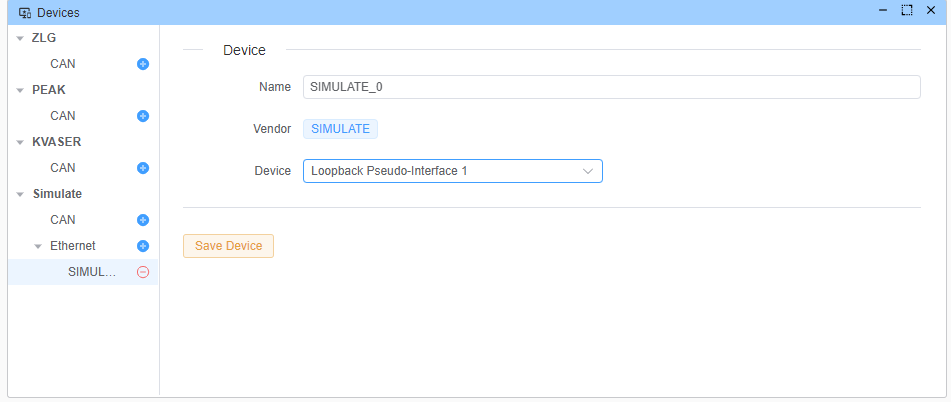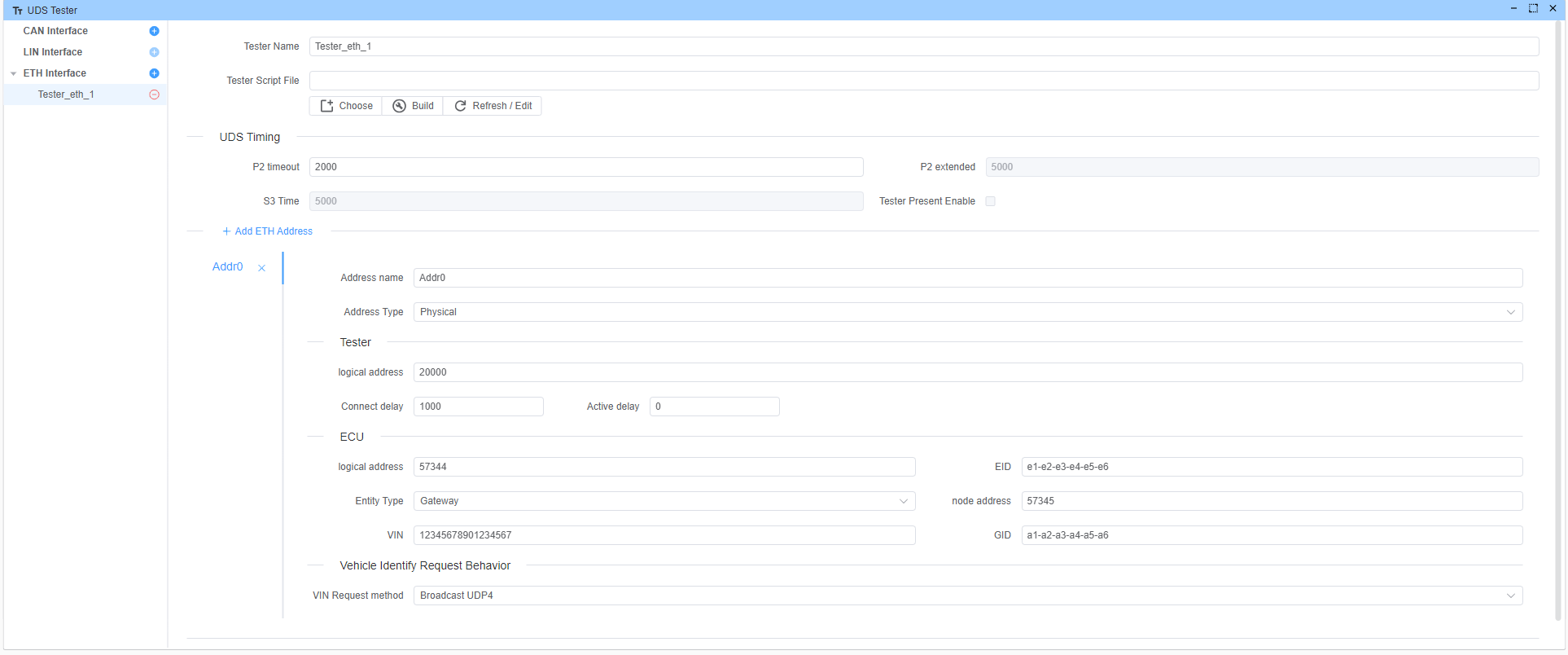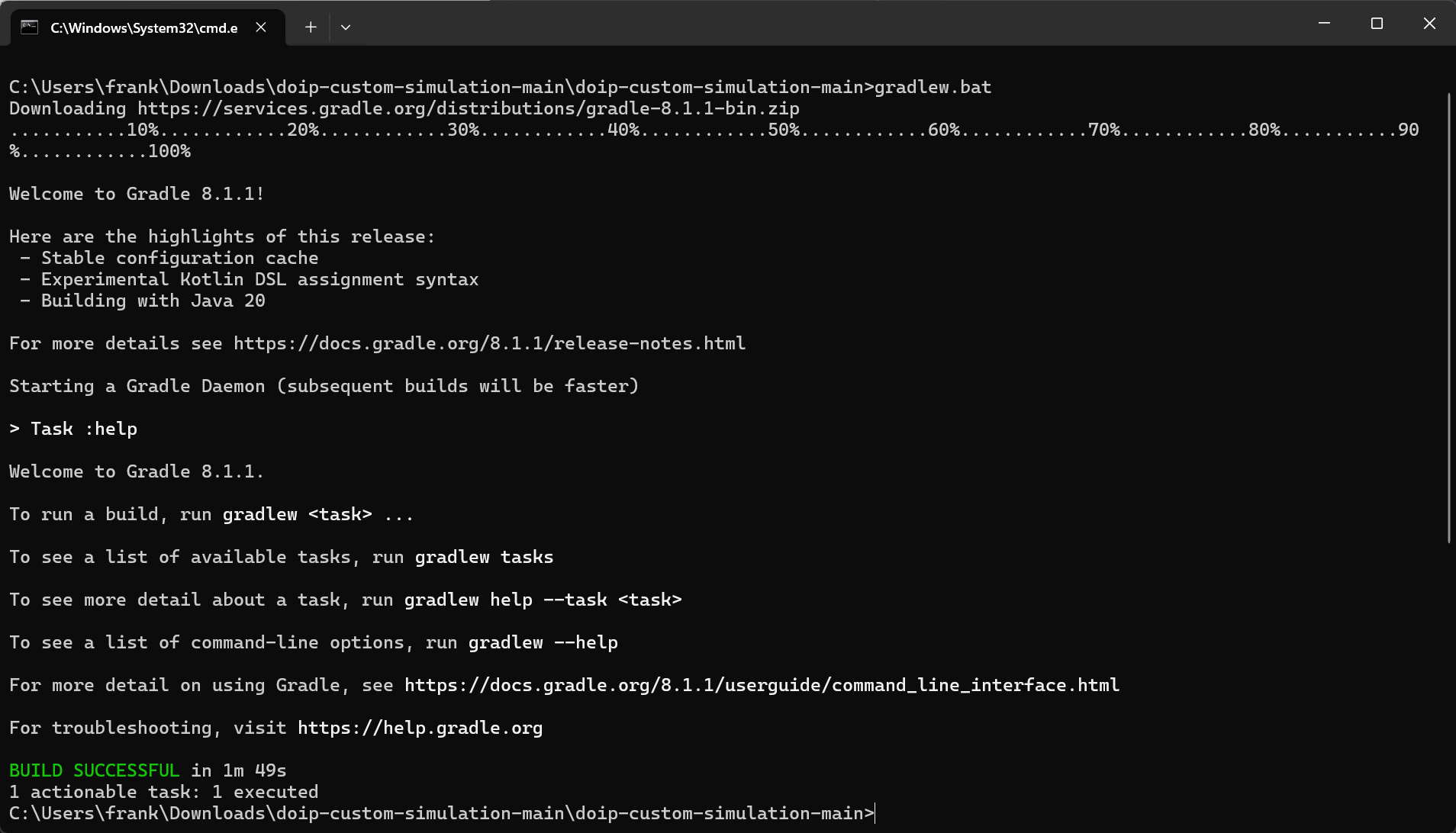DoIP Example
This example demonstrates how to use the DOIP protocol to communicate with the ECU. EcuBus-Pro acts as the tester, while doip-custom-simulation functions as the entity (Gateway).
EcuBus-Pro Setup
Device
Use loopback channel 
Tester
Address information get from doip-custom-simulation gateway.properties file
- Tester addr:20000
- Gateway addr:57344
- Ecu addr:57345

doip-custom-simulation Setup
doip-custom-simulation is a custom simulation for the DOIP protocol, functioning as an entity. For more detailed information, visit the doip-custom-simulation GitHub repository.
Install
git clone https://github.com/doip/doip-custom-simulation.gitBuild
cd doip-custom-simulation
.\gradlew.bat buildTIP
Using aliyun mirror if you download gradle too slow, edit gradle/wrapper/gradle-wrapper.properties file update distributionUrl to https\://mirrors.aliyun.com/macports/distfiles/gradle//gradle-8.1.1-bin.zip

Generate dist
.\gradlew.bat installDistRun
*.properties file is the configuration file, you can modify it to change the configuration.
cd build\install\doip-custom-simulation
java "-Dlog4j.configurationFile=log4j2.xml" -jar libs/doip-custom-simulation-2.0.0.jar gateway.propertieslog from doip-custom-simulation:
10:55:24.574 [GW:TCP-RECV-1] TRACE doip.simulation.standard.StandardGateway - >>> public void onConnectionClosed(DoipTcpConnection doipTcpConnection)
10:55:24.574 [GW:TCP-RECV-1] TRACE doip.library.comm.DoipTcpConnection - >>> void removeListener(DoipTcpConnectionListener listener)
10:55:24.574 [GW:TCP-RECV-1] TRACE doip.library.comm.DoipTcpConnection - <<< void removeListener(DoipTcpConnectionListener listener)
10:55:24.574 [GW:TCP-RECV-1] TRACE doip.simulation.standard.StandardGateway - <<< public void onConnectionClosed(DoipTcpConnection doipTcpConnection)
10:55:24.575 [GW:TCP-RECV-1] TRACE doip.library.comm.DoipTcpConnection - <<< public void onSocketClosed()
10:55:24.575 [GW:TCP-RECV-1] TRACE doip.library.net.TcpReceiver - <<< public void onSocketClosed()
10:55:24.575 [GW:TCP-RECV-1] TRACE doip.library.net.TcpReceiverThread - <<< void run()
10:59:23.777 [Thread-3 ] INFO doip.simulation.standard.StandardTcpConnectionGateway - Connection will be closed due to general inactivity timer expired. General inactivity time was 300000 ms.
10:59:23.778 [Thread-3 ] TRACE doip.library.comm.DoipTcpConnection - >>> public void stop()
10:59:23.779 [Thread-3 ] TRACE doip.library.net.TcpReceiverThread - >>> void stop()
10:59:23.779 [Thread-3 ] DEBUG doip.library.net.TcpReceiverThread - Close socket
10:59:23.779 [Thread-3 ] TRACE doip.library.net.TcpReceiverThread - <<< void stop()
10:59:23.791 [Thread-3 ] TRACE doip.library.net.TcpReceiver - >>> void removeListener(TcpReceiverListener listener)
10:59:23.792 [Thread-3 ] TRACE doip.library.net.TcpReceiver - <<< void removeListener(TcpReceiverListener listener)
10:59:23.792 [Thread-3 ] TRACE doip.library.comm.DoipTcpConnection - <<< public void stop()Execution
Start the sequence and open the trace window to view all frames. Alternatively, use Wireshark to capture these frames. 